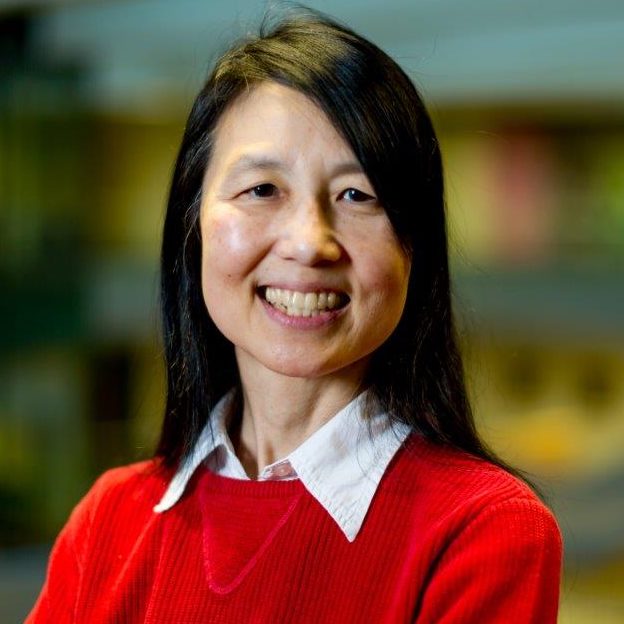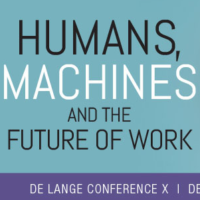Executive Q&A: Jeannette M. Wing, Head of Microsoft Research
Microsoft is a Lab and Center member of CRA. This article is the second in a series of our industry member profiles.
 Jeannette M. Wing joined Microsoft Research in January 2013, after holding positions in academia and government, most recently at Carnegie Mellon University and the National Science Foundation (NSF). From 2007 to 2010, she served as assistant director of the Computer and Information Science and Engineering Directorate at the NSF. Wing is a former CRA board member and recipient of the 2011 CRA Distinguished Service Award. Her areas of expertise are in trustworthy computing, formal methods, concurrent and distributed systems, programming languages, and software engineering.
Jeannette M. Wing joined Microsoft Research in January 2013, after holding positions in academia and government, most recently at Carnegie Mellon University and the National Science Foundation (NSF). From 2007 to 2010, she served as assistant director of the Computer and Information Science and Engineering Directorate at the NSF. Wing is a former CRA board member and recipient of the 2011 CRA Distinguished Service Award. Her areas of expertise are in trustworthy computing, formal methods, concurrent and distributed systems, programming languages, and software engineering.
You are recognized as one of the originators of the concept of “computational thinking”. How do you feel this concept is progressing?
Ten years ago, I published my viewpoint on “computational thinking” in Communications of the ACM to advocate that understanding concepts in computer science can benefit anyone, regardless of discipline, occupation, or profession. I could not be more gratified to see how computational thinking has been embraced fully by colleges and universities around the world, by their providing introduction to computer science classes that go beyond just programming. But exceeding my expectations is the progress we as a community have made at the K-12 level. The UK Department of Education 2013 mandate to teach computing at all grade levels sets an example for the rest of the world. President Obama, in his 2016 State of the Union address, set a goal for the US to provide computer science education to all. And China’s Ministry of Education will announce by the end of this year that starting September 2017 computational thinking will be a required core competency for high school graduation. I am grateful to the entire computer science community, the education community, and funding agencies, such as the NSF, for their help to make this vision become a reality.
How do educational programs in the US need to change to meet the needs of the future?
Minimally, all high school students should have access to a computer science course. Ideally, taking a computer science course would be a high school requirement. This course should teach foundational concepts of computing, not just computer programming. Many major metropolitan areas, such as New York City, Chicago, and San Francisco, are already moving in the direction of mandatory learning of computing by pre-college students, so I am optimistic we can achieve the minimal goal over time. At the college level, computer science should count toward relevant distribution requirements; for example, if not a required course for all graduates, as it is at Carnegie Mellon University, computer science should at least count toward a science, analytical thinking, or quantitative reasoning requirement.
What’s your view of the role of industry labs in the computing research ecosystem?
The famous tiretracks diagrams published by the National Academies argue the importance of the academia-government-industry ecosystem in information technology for the economy and society. Innovation in computing is accelerated by this vibrant ecosystem, largely due to the free flow of people and ideas between academia and industry, with government funding research that industry would not and seeding both early exploratory and technology incubation efforts. This research ecosystem has led to billion dollar businesses that benefits not just the US, but society at large.
Industrial research labs, including Microsoft Research, play a critical role in this ecosystem. First, as a driver of research: Industry brings to the research agenda real-world problems, at a scale and along a multitude of dimensions that is unfathomable in academia. Solving these problems can in turn have real-world impact on billions of people, and generate new research questions. Second, talent: Industry demand for talent is met by academia, where Ph.D. students are trained, often funded by government grants. Third, resources: Industry can give academics access to resources, such as data sets and computational infrastructure, that would otherwise be unavailable to them. While the government might be able to fund some shared infrastructure, the data sets are unique to companies and invaluable for advancing state of the art in computing.
How has Microsoft remained committed to supporting fundamental research efforts despite economic pressures to curtail work with longer-term potential payoff?
Microsoft’s commitment to research starts from the top, with Satya Nadella, the CEO of Microsoft. He and the company understand the importance of fundamental research and the long horizon timeframe of research. Nearly every Microsoft product and service has been touched by research from Microsoft Research (MSR). When the company decided to build the search engine Bing, it turned to MSR, which had been doing research in information retrieval, search, and machine learning for years. Skype Translator, which now supports nine languages, would not exist were it not for MSR’s long-term investments in speech, machine translation, and natural language processing. The HoloLens relies on the fundamental research MSR has done in computer vision, audio processing, and gesture recognition. Azure continues to benefit from MSR’s research in distributed systems, storage systems, networking, algorithms, and economics. Any company, especially with increased competition, will feel the pressure to show short-term benefits to its shareholders, even from its research division. It takes a strong and visionary leadership to take a long-term view in committing to fundamental research.
What are some of the most exciting opportunities and challenges you face as head of Microsoft Research Labs?
Microsoft just announced that it is going big in AI. Our focus is on humans and machines working together in partnership. This focus provides a tremendous opportunity to Microsoft researchers in both artificial and human intelligence, e.g., machine learning, speech, vision, natural language processing, human-computing interaction, situated interaction, and hybrid intelligence. There are exciting opportunities to pursue research in conversational agents, chat bots, personal assistants, and augmented and virtual reality devices and systems. But it is also a tremendous opportunity for our systems researchers in two ways: systems for AI and AI for systems. For the former, what kind of new systems architecture, including configurations of FPGAs and GPUs, is needed to make AI applications run more effectively and efficiently? For the latter, how can we infuse AI and machine learning into the cloud to increase its availability, reliability, and performance? I’m especially excited about two emerging research areas: economics and AI (e.g., to incorporate high-dimensional data into novel economic models with which to do predictions and recommendations) and social science and AI (e.g., to reason about fairness, accountability, transparency, and ethics in our AI-based systems). Finally, extrapolating into the future, I believe we need to invest more in computational neuroscience, to better understand humans at the neural level in designing our computing systems and to better understand how humans compute to inspire new models of machine computation.
While Microsoft is going big in AI, Microsoft Research continues to serve the entire company. Microsoft’s products and services, from Surface to Windows to Azure to Office and everything in between, require expertise in the breadth of computer science. Our core computer science strengths in distributed systems, networking, databases, storage systems, programming languages, formal methods, software engineering, security, and privacy are tapped everyday by our product teams. Our researchers, especially our economists and social scientists, work not just with our engineering groups, but with sales and marketing, civic engagement, policy, and even human resources. Further out into the future, we are anticipating novel computing substrates with our big bets on quantum computing and biological computing.
Looking far into the future for the computing field more broadly, I see an era of computing where uncertainty is a first-class citizen. (I credit MSR Cambridge Lab director, Chris Bishop, for that phrase). From the chip level through the systems level to the application level, we will no longer hide approximation, failure, and statistical variance, but we will embrace it. This view means we will need to marry symbolic (logical) reasoning with probabilistic reasoning. We see research already along these lines, albeit at separate layers: approximate computing at the hardware layer, probabilistic programming at the systems layer, and probabilistic-based inference systems at the application layer. Two drivers for this view are the advent of AI applications that are based on statistical methods; and the advent of sensor data which are noisy and incomplete. The human-cyber-physical systems of tomorrow will have to deal with the inherent uncertainty of their environment, where uncertainty is due to unpredictable system failures, Mother Nature, and the malicious attacker.
What is your vision for Microsoft Research in the next 5-10 years?
Microsoft Research is a gem. It has incredibly smart, energetic, and talented people. It does world-class research in computer science and other related fields. It is the envy of many in academia and industry worldwide. To make this precious gem shine more brightly, Microsoft Research is focused on doing higher impact projects, in terms of both scientific and company impact. My dream is for Microsoft Research to make a scientific breakthrough that transforms not just Microsoft, but the entire computing industry. At Microsoft Research, I use the mantra “Think Bolder, Aim Higher” to encourage people to reach for the moon.
Could you describe how Microsoft Research collaborates with academic researchers?
At Microsoft Research, we partner very closely with academia, through hosting visiting faculty, post-docs and student interns; working on joint projects and publishing together; attending conferences together; and serving on university advisory boards. I like to think academia is an extension of Microsoft Research and vice versa. The sheer scale of Microsoft’s involvement with academia is astonishing. In our 25 years, we have published over 23,000 joint papers with over 22,000 authors from over 1,500 institutions outside of Microsoft. But more importantly than numbers, are the close, deep, and long-term relationships we have with colleagues in academia. The value of those relationships is immeasurable.
Last fall, you wrote a blog post about the importance of federal research funding. What inspired you to write this post?
In 2014, the American Academy of Arts and Sciences published the report Restoring the Foundation: The Vital Role of Research in Preserving the American Dream. I was on the committee that helped write the report. This past May, with report in hand, I testified before the Senate Commerce, Science, and Transportation Committee to keep the report’s message alive in the minds of Congress. This is the message: Federal funding of basic research in science and engineering is critical for the nation—for economic growth, the health and wellbeing of individuals and society, and protecting national security. In my blog post, I saw an opportunity to draw this analogy: Investing in fundamental research is as important for the nation’s future as it is for Microsoft’s future.


